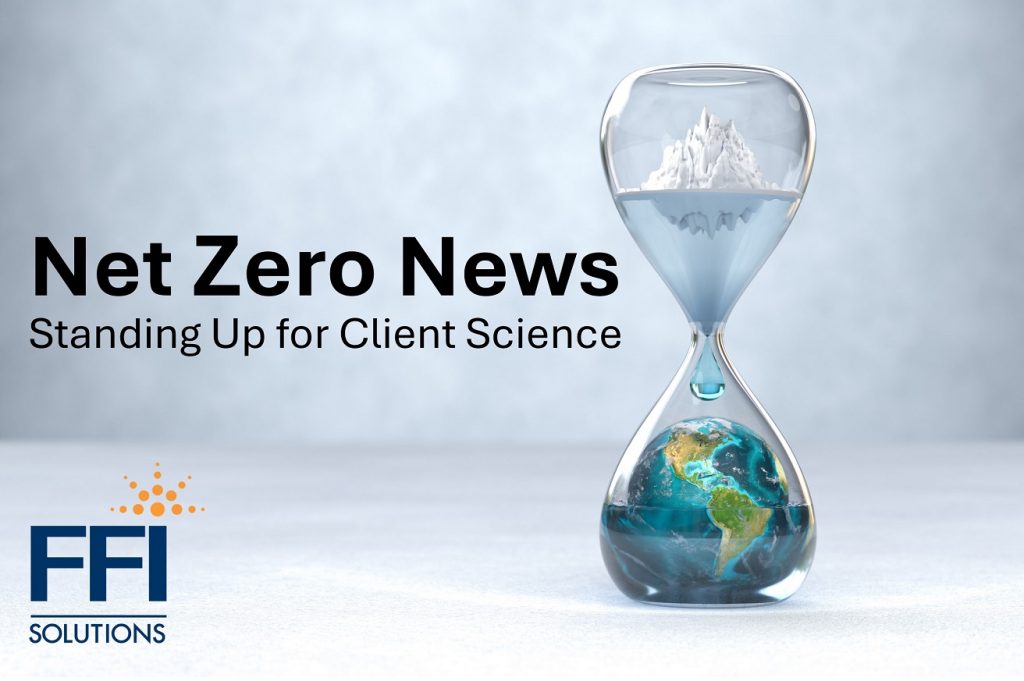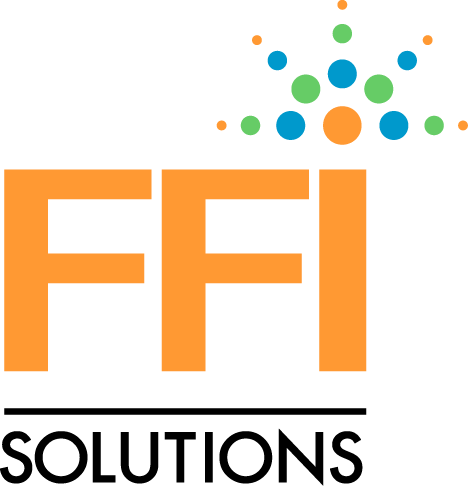
FFI Solutions helps investors, asset managers and their advisors navigate climate-related risks. We do this without advocating specific values or policy positions. However, for us, one principle remains essential – continued progress in climate science is critical for financial market participants to make informed decisions.
Recent U.S. developments at the federal level have raised concerns about the future of key institutions that provide the data and research necessary to understand climate change and its economic implications. Science is the foundation for assessing climate-related financial risks, shaping policy, and guiding capital allocation. Grounded in physics, chemistry, biology, and oceanography, climate science should operate independent of politics. Without it, investors face greater uncertainty. While policy debates will continue, preserving the integrity of scientific research is imperative.
This week’s Net Zero News takes a different approach. Instead of our usual selection of finance-oriented articles, we are highlighting key climate science stories and the researchers advancing our understanding of climate risk. A clear grasp of climate systems is essential for long-term financial stability and market integrity, and their work deserves attention now more than ever.
Receive our weekly Net Zero News
-
Earth is already shooting through the 1.5°C global warming limit, two major studies show
“The science shows greenhouse gas emissions must reach net-zero to end global warming. Even then, some aspects of the climate will continue to change for many centuries.” – The Conversation
Two major studies published in Nature Climate Change suggest Earth has likely entered a long-term breach of the 1.5°C warming threshold. The research indicates that even a single year above 1.5°C (as seen in 2024) signals a longer-term crossing of this critical threshold. The studies, conducted independently by European and Canadian teams, used different methodologies but reached similar conclusions about the significance of recent temperature records. The Conversation story here
The 1.5°C ambition established in the Paris Agreement represents a global average temperature increase relative to pre-industrial levels – measured over decades, not individual years. Exceeding this level does not mark a single tipping point or an abrupt climate breakdown, but it does indicate a higher likelihood of more severe climate impacts, from extreme weather to ecosystem disruptions. Whether the breach is temporary or sustained, the fundamental challenge remains the same – adaptation and mitigation efforts must accelerate. Financial markets, economies, and societies must prepare for increasing climate-related risks, while also advancing strategies to limit further warming. In that sense, crossing 1.5°C is not the end of the conversation, but a reminder of why the work ahead remains critical.
-
NOAA imposes limits on scientists, sparking concerns over global forecasts
“Cutting these services now would be a reckless decision that would cost far more in lives and damages than it would ever save on a balance sheet.” – Greg Carbin, former NWS forecast operations chief
New restrictions at the National Oceanic and Atmospheric Administration (NOAA) require scientists to document and seek approval for international collaborations, potentially hampering weather forecasting and climate research. The U.S. federal agency faces potential 50% staff reductions and 30% budget cuts. A recent study found the National Weather Service provides $73 in value for every dollar invested. Scientists warn these potential changes could degrade weather prediction quality and limit access to critical climate data. The Guardian story here
The threatened cuts to NOAA are just one facet of what watchdog groups describe as “an all-out war on science and scientists.” The systematic removal of climate data from U.S. federal government websites, curtailing of international collaboration, and broad research funding freeze signal an unprecedented assault on scientific institutions. For institutional investors, this coordinated dismantling of scientific infrastructure creates dangerous blind spots in climate risk assessment; particularly troubling as extreme weather events and climate impacts accelerate across sectors and geographies.
-
Cracks in Greenland ice sheet are growing, study shows
“As crevasses grow, they feed the mechanisms that make the ice sheet’s glaciers move faster, driving water and heat to the interior of the ice sheet and accelerating the calving of icebergs into the ocean.” – Ian Howat, Director of the Byrd Center
A new study in Nature Geoscience by Durham University professor Thomas Chudley and colleagues reveals significant increases in surface crevasses across Greenland’s ice sheet occurred between 2016-2021. Using high-resolution 3D mapping, researchers found crevasse volume increased by up to 25% in marine-terminating sectors. These changes accelerate ice loss through multiple mechanisms, creating what study co-author The Ohio State University professor Ian Howat calls a “domino effect” that could speed up Greenland’s ice loss. Ohio State News story here
With ice sheet degradation occurring faster than current models predict, insurers, real estate firms, and infrastructure investors face heightened risk exposure, as the study indicates potential underpricing of climate risk in certain assets. This accelerated ice loss could significantly impact coastal assets and infrastructure while also disrupting global shipping routes, insurance markets, and municipal bond ratings.
-
NAU researcher outlines new risks of warming, warns of faltering US science leadership
“If we care about our kids and grandkids and future generations, this doubling down on fossil fuel use that we know is the wrong direction is not a good path.” – Ted Schuur
Research published in Science by Northern Arizona University professor Ted Schuur and international collaborators warns that Arctic warming is accelerating beyond previous projections, with implications cascading globally. At 2.7°C of warming, Arctic landscapes would be “transformed beyond contemporary recognition,” leading to ice-free summers and approximately 10 feet of sea level rise. The study highlights how Arctic changes create feedback loops – as ice melts, darker surfaces absorb more heat, accelerating warming. The researchers note that even maintaining current emissions reduction pledges would result in 2.7°C warming by 2100. Azcentral story here
The accelerating Arctic changes represent a material risk multiplier that investors must factor into long-term planning. Beyond direct impacts to coastal real estate and infrastructure, the feedback loops could accelerate climate impacts across other sectors. These feedback loops, and the interconnectedness of oceans, land and atmosphere, create challenges in climate modeling. Companies with exposure to assets in the Arctic face particular risks, while those providing adaptation solutions may see growing opportunities.
-
New technology lights way for accelerating coral reef restoration
“We are not mitigating climate change fast enough to save coral, and UZELA is not going to instantly save coral reefs. But it is an exciting solution that will buy us time.” – Andrea Grottoli
Research led by The Ohio State University professor Andrea Grottoli introduces UZELA (Underwater Zooplankton Enhancement Light Array), a novel technology showing promise in coral reef restoration. The research demonstrates that this autonomous, programmable underwater light increases coral feeding rates from ten to fifty-fold by attracting zooplankton, making corals more resilient to environmental stress. While not a complete solution to climate threats facing coral reefs, the technology offers a potential bridge solution for preserving critical reef systems. Ohio State News story here
This research exemplifies the emerging investment opportunities in ocean health innovation. Healthy oceans serve as crucial carbon sinks and maintain ecosystems that billions rely on for food security and livelihoods. While UZELA demonstrates a promising technological solution, the potential elimination of National Science Foundation funding threatens similar breakthrough research. Investors should recognize both the risks to ocean-dependent industries and the opportunities in technologies and companies focused on marine ecosystem preservation and restoration.
-
Bonus article: Columbia Climate School launches first M.S. in Climate Finance program in the United States
“There is a real demand in business and finance for practitioners who understand climate variability, climate risk, the difference between mitigation and adaptation, and emerging investment opportunities.” – Lisa Sachs, Director of the Columbia Center on Sustainable Investment
Columbia Climate School, in partnership with Columbia Business School, has announced the launch of the first M.S. in Climate Finance program in the U.S., beginning later this year. This one-year interdisciplinary degree combines climate science with advanced financial tools, focusing on adaptation strategies, international climate finance, and infrastructure financing. The program includes Stanley Park Climate Finance Scholarships for students from emerging economies committed to the public and nonprofit sectors. State of the Planet story here
We applaud our friends at Columbia University for this pioneering program that addresses a critical market need. The intersection of climate science and finance is precisely where the next generation of climate solutions will emerge. By combining the expertise of the Climate School and Business School, Columbia is creating a new category of professionals equipped to tackle both the scientific and financial dimensions of climate challenges.

Michael Palmieri
President
FFI Solutions
Download our whitepaper
Climate Integration Framework for Institutional Investors

